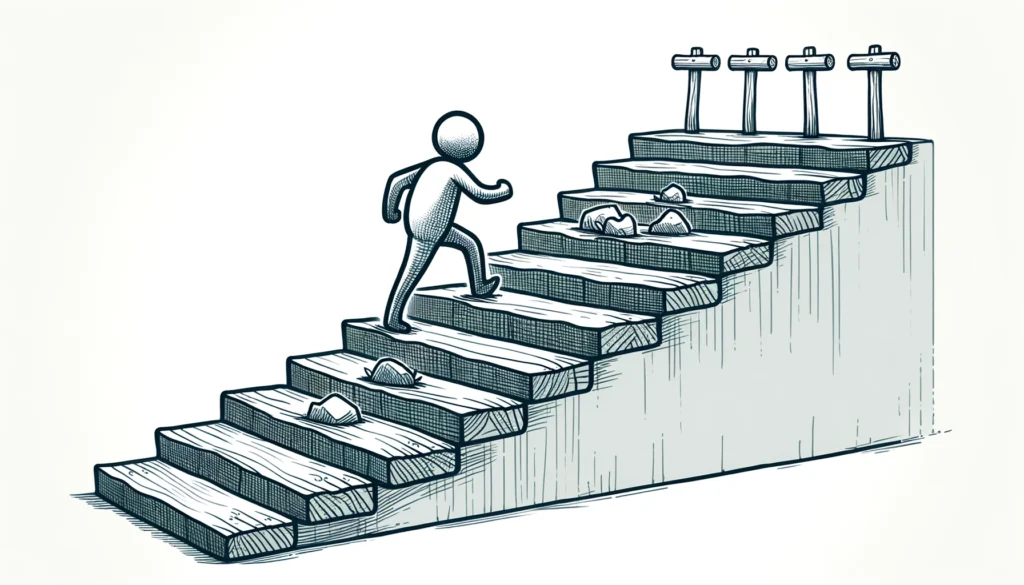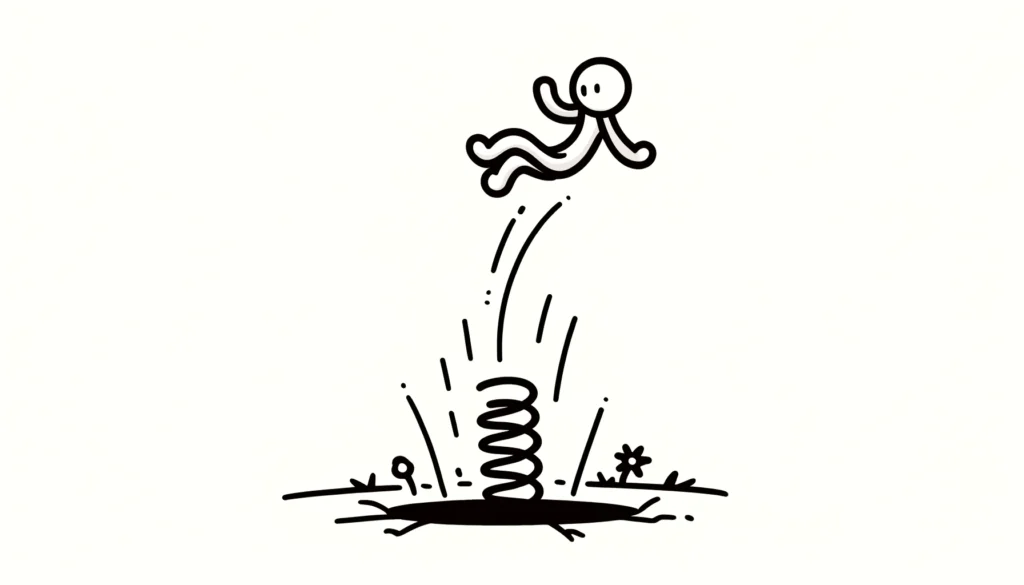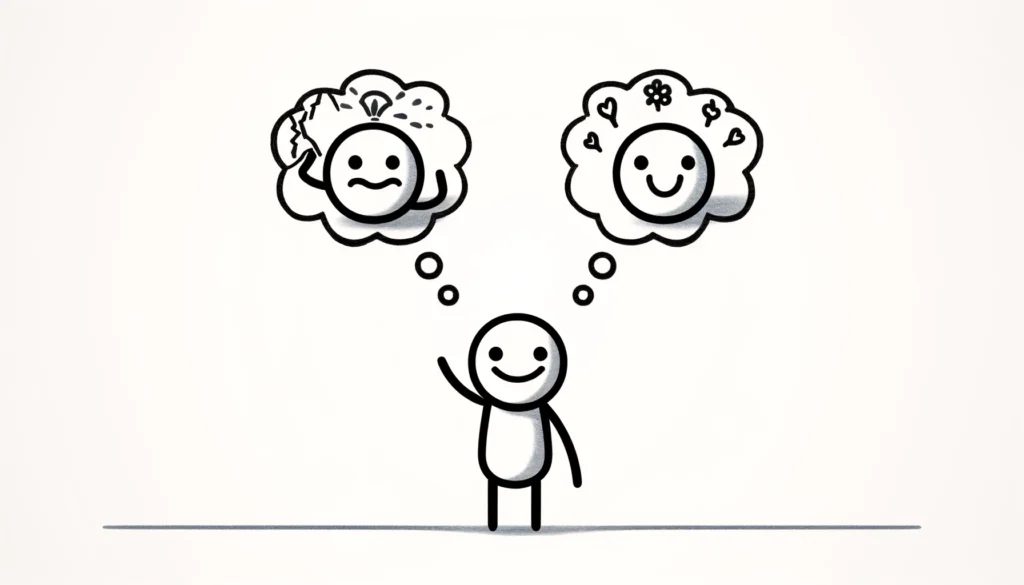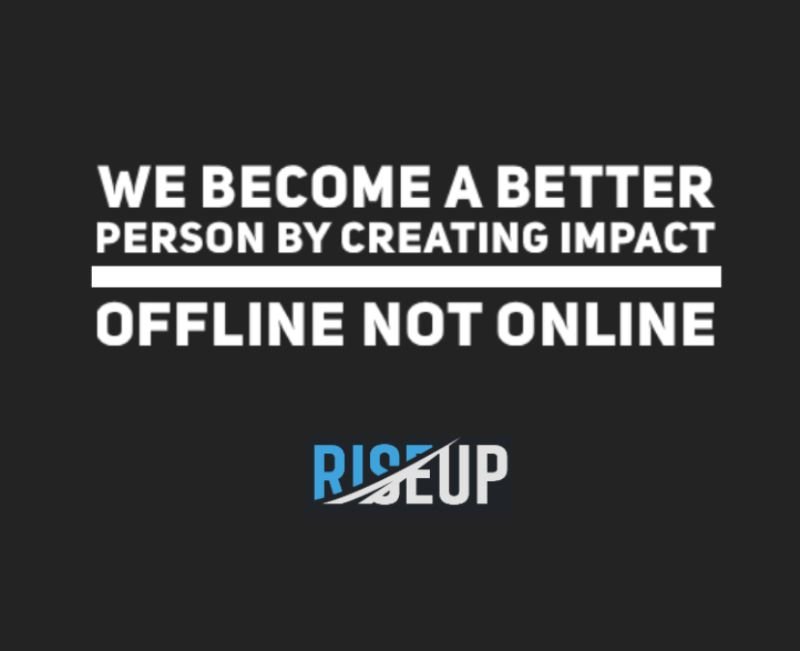
Making failure positive is about shifting one’s perspective to see failures as opportunities for growth, and increased innovation, rather than as personal shortcomings. This mindset shift can unlock new possibilities, drive innovation, and ultimately lead to greater success in both personal and professional endeavors
In our personal and professional journeys, failure is as inevitable as it is essential to succeed. Understanding failure not merely as defeat or as the outcome of a misstep but as a vital stepping stone towards success can transform our lives.
Here, we delve into how failure, often perceived with dread or disappointment, can be restructured as a foundation for building resilience, and achievement.
The Role of Failure in Personal Growth

Experiencing both successes and failures is crucial both philosophically and psychologically because it drives human growth, self-awareness, and a richer understanding of life. Success and failure are inseparable, each defining the other.
Philosophically, success reflects the achievement of goals, whereas failure highlights their absence. This contrast not only helps us refine our definitions of success and failure but also challenges irrational beliefs that skew our self-perception.
From a psychological perspective, the interplay between success and fear of failure is essential for emotional resilience. Failures, much like physical exercise stresses muscles to make them stronger, can teach perseverance, courage and humility.
Conversely, successes provide motivational boosts and emotional satisfaction, similar to the relief and warmth felt after a harsh winter.
Integrating philosophical and psychological views, we see that philosophy deepens our understanding of concepts like consciousness and self. While psychology offers insights into how our brains process these experiences.
Together, they underscore the importance of overcoming setbacks and viewing failures as opportunities for learning and growth, shaping a more profound comprehension of our mental and emotional landscapes.
Move Forward and Bounce Back Quickly

Here are three essential and powerful concepts that you can adopt and implement in your life the right mindset to help you move forward, avoid failure, and quickly recover when you encounter a failure or any adverse event.
Learning from Mistakes
One example of the things I learned from coaching individuals and leaders is that we tend to be too involved when things go south. We label ourselves as victims and choose to expect others to suffer when we as leaders can simply step back and ask: What can I take away from this very moment of failure?
We should take the valuable lessons and leave the story, or the wrong circumstance, behind. The lesson we learn is more important than the story, as it will be useful to us in the future.
A coachee of many of the most successful people went through multiple business failures. Whatever he touched would turn to dust. We had a conversation about avoiding failure, and I asked him: “Have you learned anything useful from your failure?”
That was when he suddenly realised that failure had taught him about trust in the business world and how building relationships requires consistent effort. What is a lesson that you need to learn so that you can leave the story behind?
What stories prevent your people from moving forward with the lessons so they can finally ignite their performance? It’s essential to differentiate between the moment or event of failure and the narrative we construct around it.
When faced with setbacks or failure, it’s crucial to extract the lessons and discard the emotional baggage. This approach allows us the ability to learn and adapt without the weight of past failures clouding our future dreams and endeavors.
Reframing Failure
Next, reframe failures as evidence of our strengths, not our weaknesses. Every failure offers direct insights into our resilience, commitment and determination.
Instead of viewing failures as endpoints, see them as a point, indicators of areas where we can improve. This mindset fosters a ‘growth mindset’, essential for achieving long-term success.
When we can process and reframe our failures making mistakes into something meaningful, we can turn them into strengths. That is a powerful ability to harness as it builds one’s resilience, which will help us fly higher.
A study has been done on a group of children, following them through from school into their adulthood. These children came from less-than-ideal backgrounds, did not seem to have any chance in life, and finally succeeded.
Those who succeeded were able to embrace failure, turn their situation into strengths and look at things from another perspective. Their resilience increased in tandem with their view point of the world.
The perspective of failure lead your world and failure determines how close you are to your big goal of success. Build stronger wings today to fly higher than you think you can or fall.
Perseverance in the Path to Success
Most of the time, we forget that we must fail and experience multiple failures before finally tasting success. The successes that we see around us are the results of multiple failures. Failures can skyrocket a person to succeed, grow tremendously and achieve more.
Embracing failure forces a realistic view of success—as a path marked by numerous setbacks—can help set more realistic expectations and prepare us for the persistence required. Each failure teaches us something valuable about the process of success and, most importantly, about ourselves.
Without failure, how will you know what works and what doesn’t? Those who succeeded took the ladder of failure, not the escalator of success. There is no such thing as the escalator of success.
There is only the ladder. We need to climb up slowly, sometimes missing steps along the way and even falling a few steps down. When you fall and are tired, you can stop for a rest but do not ever stop.
To make a failure a positive experience, take the lesson and leave the story behind, as it is how you develop stronger wings. The only way to have stronger wings is to climb the ladder of success. Refrain from betting on the escalator. It breaks down quite often and requires regular maintenance.
Cultivating a Positive Perspective

The perspective with which we accept failure and we view failure as learning opportunity, can determine our long-term success. Adopting a positive outlook towards setbacks can radically change our approach and response to challenges, encouraging a proactive stance where failure is not feared but factored into our plans as a possible outcome.
Remember, setbacks and failures are an inevitable part of the journey to success. By approaching them with a constructive mindset and employing these strategies, you can turn challenges into opportunities for growth, progress and keep moving forward with resilience and determination.
Dealing with Setbacks Constructively
- Acknowledge Your Feelings: Allow yourself to feel the initial disappointment, frustration, or sadness that comes with experiencing a setback. These emotions are natural and valid. 2
- Reframe the Situation: Look for the potential learning opportunities or silver linings in the setback. Shift your perspective to view it as a chance for growth and improvement rather than just a failure.
- Practice Self-Compassion: Be kind to yourself and avoid self-criticism. Remind yourself that everyone faces challenges and that it’s okay to make mistakes. Treat yourself with the same understanding you would offer a friend.
- Seek Support: Talk to trusted friends, family members, or mentors about what you’re going through. Sharing your feelings can provide emotional relief and offer different perspectives on the situation.
- Focus on What You Can Control: Identify the aspects of the setback that are within your influence and take constructive actions to address them. This can help you regain a sense of agency and reduce feelings of helplessness.
- Develop an Alternative Plan: If the original path is no longer viable, consider exploring alternative ways to achieve your goals. Brainstorm new strategies and be open to exploring different routes forward.
- Learn from the Experience: Reflect on what you can learn from the setback. What insights can you gain that will help you navigate similar challenges in the future? How can you apply these lessons to improve your approach going forward?
Staying Motivated Despite Failures
- Shift Your Perspective: Reframe failures as opportunities for growth and learning, rather than as personal shortcomings. Recognize that setbacks are a natural part of the journey to success.
- Celebrate Small Wins: Acknowledge and appreciate the progress you’ve made, even if it’s not the end result you were hoping for. Celebrate the small victories along the way to maintain motivation.
- Embrace the Journey: Focus on enjoying the process and the journey, rather than becoming overly obsessed with the end goal. Appreciate the lessons and experiences you’re gaining, even in the face of setbacks.
- Develop a Growth Mindset: Believe that your abilities and skills can be developed through dedication and hard work. Approach challenges as opportunities to improve, rather than as threats to your self-worth.
- Surround Yourself with Positivity: Seek out supportive friends, family, or mentors who can encourage you and help you maintain a positive outlook, even when facing difficulties.
- Take Care of Yourself: Engage in self-care activities that help you manage stress and maintain your well-being. This can include exercise, meditation, or simply taking breaks to recharge.
Encouraging a Culture of Openness About Failures
Promoting a culture where sharing stories of failure is encouraged can profoundly impact communities and organizations.
By normalizing the discussion of failures and reframing them as learning opportunities, organizations and communities can foster an environment where people feel empowered to take risks, try out new ideas and new approaches, and drive innovation without the fear of being judged or penalized for their mistakes.
Sharing failure stories is a powerful way to build trust, promote psychological safety, and unlock the potential for growth and improvement. This shift can lead to several positive outcomes:
- Sharing failure stories helps reframe the mental model of failure from something to be ashamed of to an opportunity for learning and growth.
- When people openly share their failures, it shows that everyone is vulnerable and imperfect, which can reduce the stigma around failure and promote psychological safety.
- Failure stories can serve as valuable mentorship opportunities, allowing people to learn from others’ mistakes and prevent similar failures in the future.
- Embracing a culture of sharing failure stories encourages a mindset of continuous improvement, where people are not afraid to experiment, take calculated risks, and innovate.
- Organizational structures that promote the sharing of failures, such as through dedicated events or forums, can help address the emotional, cognitive, and organizational barriers that often prevent people from openly discussing their setbacks.
Conclusion
Transforming failure into a positive experience isn’t just about feeling better about the setbacks; it’s about building a robust foundation for future success. By learning from mistakes, reframing failures, persisting through challenges, maintaining a positive outlook, using constructive feedback, and sharing experiences, we ensure that our journey towards success is as rewarding as the destination itself.


